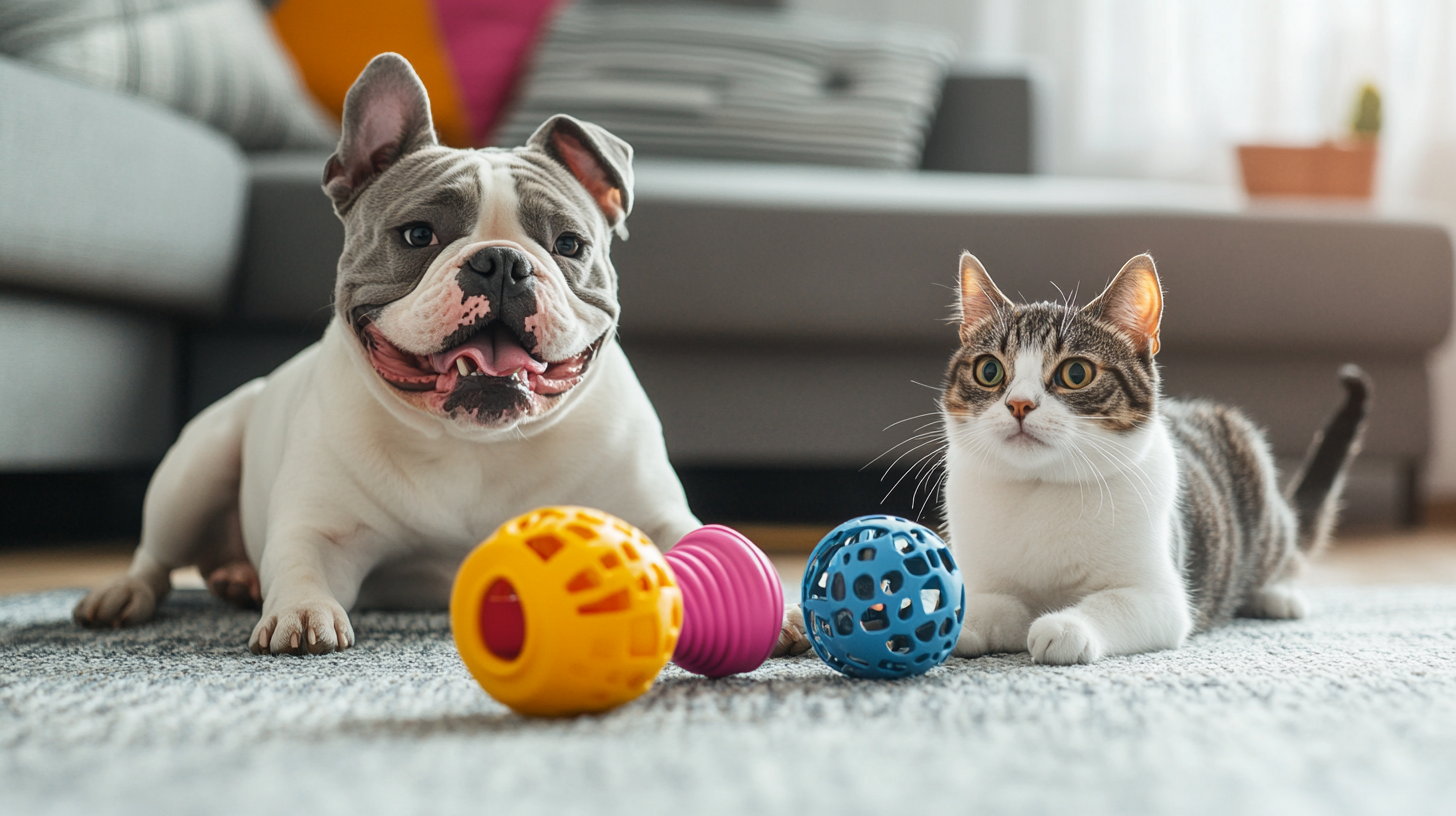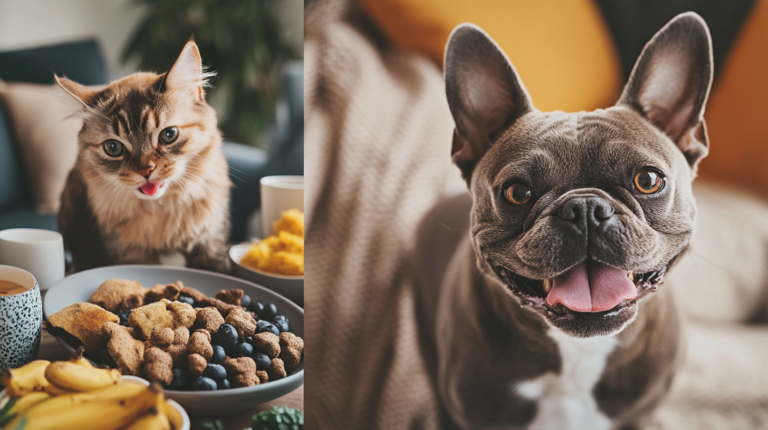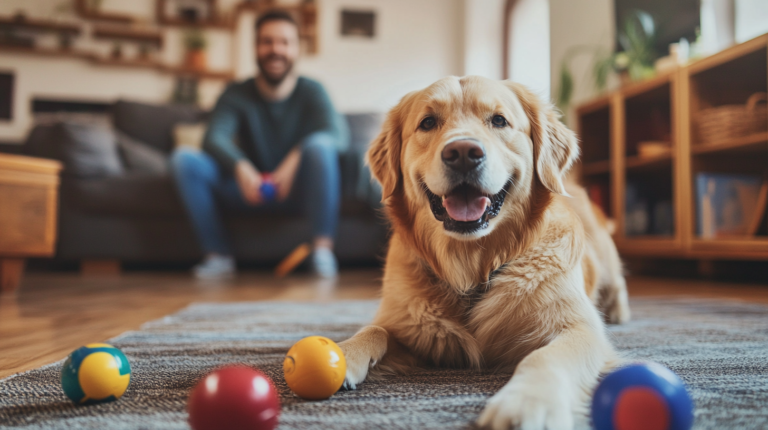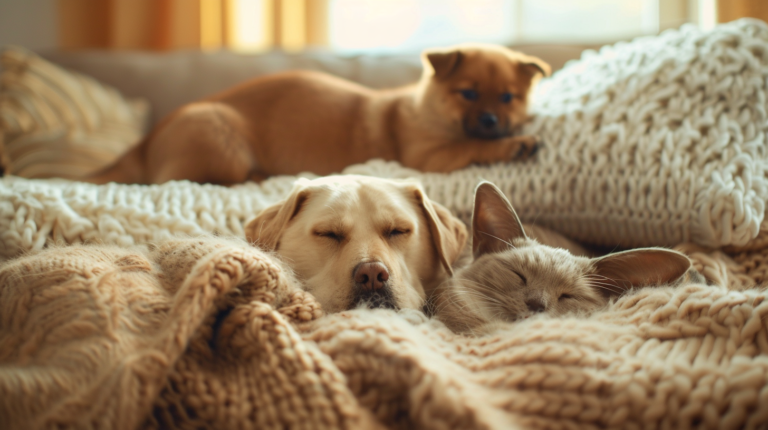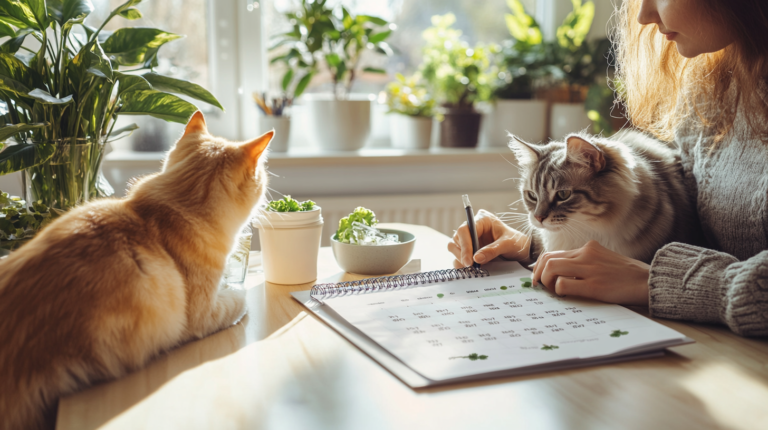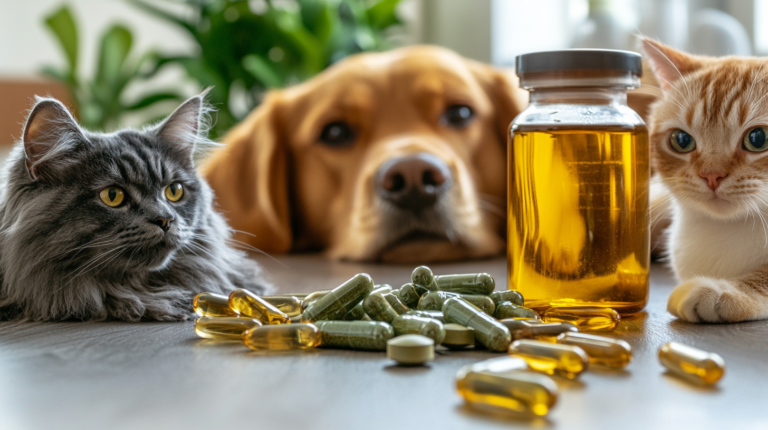Discover 6 engaging interactive pet games that boost your pet’s physical and mental health. From puzzle feeders to tech toys, transform playtime for happier pets!
Table of Contents
Introduction: Why Interactive Pet Games Matter

In today’s fast-paced world, our furry companions often find themselves spending hours alone while we’re at work or busy with daily responsibilities. This can lead to boredom, anxiety, and even destructive behaviors. Interactive pet games provide the perfect solution, offering mental stimulation, physical exercise, and an opportunity to strengthen the bond between you and your pet.
Whether you have a playful kitten, an energetic dog, or even small pets like rabbits and guinea pigs, incorporating interactive games into your pet care routine can significantly improve their quality of life. These engaging activities not only keep them entertained but also contribute to their overall health and happiness.
According to a 2023 study published in the Journal of Veterinary Behavior, pets who regularly engage in interactive play show 42% fewer signs of anxiety and depression compared to pets with limited mental stimulation. Dr. Sarah Collins, a certified veterinary behaviorist, notes: “Interactive games are not just about fun—they’re vital mental exercise that helps prevent cognitive decline and keeps pets psychologically healthy.”
In this comprehensive guide, we’ll explore six fantastic interactive pet games that are sure to become favorites for both you and your furry friend. From DIY options to tech-savvy solutions, these games will transform your pet’s daily routine from mundane to magnificent!
1. Puzzle Feeders: Turning Mealtime into Brain Time
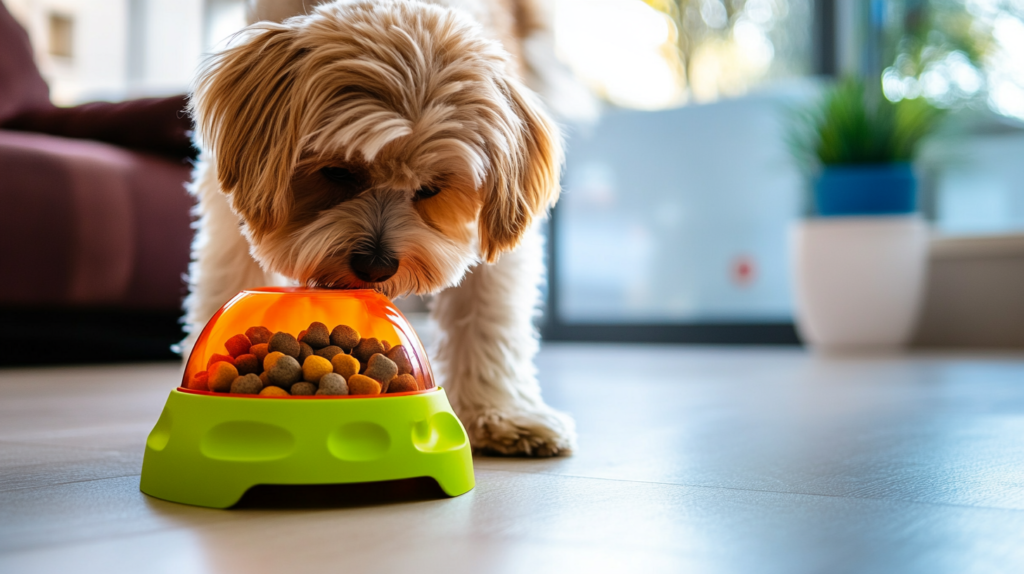
How Puzzle Feeders Work
Puzzle feeders are interactive pet games that transform ordinary meals into engaging challenges. Rather than serving your pet’s food in a regular bowl, these clever devices require your pet to solve a puzzle or manipulate various components to access their kibble or treats. This not only slows down eating (beneficial for pets who gulp their food) but also provides crucial mental stimulation.
Benefits for Different Pets
For Dogs: Canine puzzle feeders often feature sliding compartments, flip lids, or maze-like structures that require problem-solving skills. According to a study from the University of Bristol’s Veterinary School, dogs who use puzzle feeders show improved cognitive function and decreased anxiety-related behaviors by up to 30%.
For Cats: Feline puzzle feeders typically mimic hunting behaviors, allowing cats to “work” for their food by fishing treats from small openings or navigating complex pathways. This taps into their natural instincts and helps prevent obesity by slowing eating pace.
For Small Animals: Even rabbits, guinea pigs, and other small pets benefit from simple puzzle feeders that encourage foraging behaviors and prevent boredom.
DIY vs. Commercial Options
DIY Puzzle Feeders:
- Empty toilet paper tubes filled with hay and treats (for small animals)
- Muffin tins with tennis balls covering treats (for dogs)
- Homemade cardboard puzzles with hidden treat compartments (for cats)
Commercial Options:
- Nina Ottosson’s interactive dog puzzle toys (varying difficulty levels)
- Catit Senses Food Tree (excellent for cats)
- Trixie Pet Products’ activity puzzles (available for multiple pet types)
Expert Tip
Dr. Jennifer Morris, animal behaviorist at Cornell University, suggests: “Start with simpler puzzles and gradually increase the difficulty as your pet becomes more adept. This progression keeps them challenged and prevents frustration.”
2. Fetch Variations: Beyond the Basic Throw
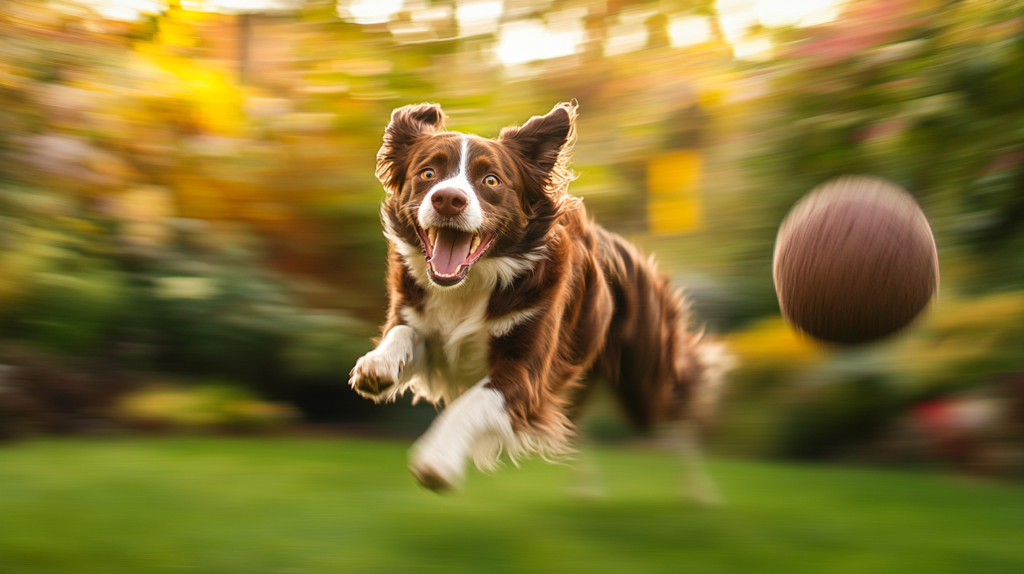
While traditional fetch might seem like a simple game, there are numerous creative variations that transform this classic activity into engaging interactive pet games suitable for various pets and environments.
Advanced Fetch for Dogs
Frisbee Fetch: Using a soft, pet-friendly flying disc instead of a ball creates new challenges, requiring your dog to track the disc’s flight path and make mid-air catches. The Hyperflite Jawz disc, designed specifically for canine athletes, offers durability and safety.
Water Fetch: For water-loving breeds, taking fetch to a pool, lake, or beach adds a refreshing dimension. Water-specific toys like the Chuckit! Amphibious Bumper float well and are highly visible.
Multi-Ball Fetch: Using multiple balls creates an exciting game where your dog must remember which ball you threw last or choose between different options.
Fetch Games for Indoor Cats
Contrary to popular belief, many cats enjoy fetch-style games when played with appropriate toys:
Catnip Mouse Toss: Small catnip-filled toys are perfect for short indoor tosses.
Ping Pong Ball Fetch: Lightweight balls that roll unpredictably on hard floors create an exciting chase for cats.
Feather Wand Returns: While not traditional fetch, many cats will chase a feather toy and “return” it by dragging it back toward you.
According to a survey by the American Pet Products Association, 63% of cat owners who introduce fetch-style games report their cats showing increased activity levels and decreased destructive behaviors.
Fetch for Small Pets
Even smaller pets can enjoy modified fetch games:
Tunnel Fetch: Place treats or favorite toys at the end of tunnels for ferrets, rats, or guinea pigs.
Roll and Return: Some trained rabbits will push or nose a small ball back to their owners after it’s rolled to them.
Safety Considerations
- Choose appropriately sized toys that can’t be swallowed
- Avoid fetch sessions during extreme temperatures
- Limit high-impact jumping for breeds prone to joint issues
- Always supervise pets during play
3. Interactive Technology: Smart Toys for Modern Pets
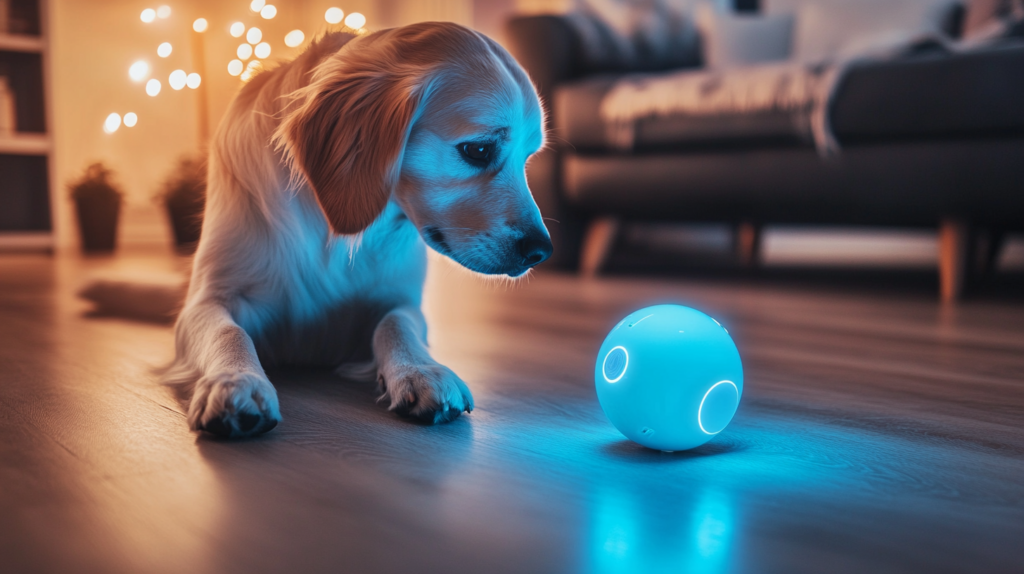
The pet tech industry has exploded in recent years, with smart toys revolutionizing the way we engage with our pets, even when we’re not home. These high-tech interactive pet games combine artificial intelligence, remote control capabilities, and automatic features to keep pets entertained.
Remote Control and App-Based Toys
Robotic Companions: Devices like the Skymee Owl Robot can be controlled remotely through smartphone apps, allowing you to drive the toy around while your pet chases it. Many models include built-in treat dispensers and two-way audio so you can talk to your pet while they play.
Smart Balls: Products like the GoBone and PupPod automatically roll, bounce, and change direction to keep your pet engaged without human intervention. According to PetTech Magazine, pets who play with automated toys show 27% more physical activity compared to those with only traditional toys.
Treat-Dispensing Cameras
Devices like the Furbo Dog Camera or Petcube Bites combine security cameras with treat-dispensing capabilities, allowing pet parents to:
- Monitor their pets remotely
- Toss treats with the tap of a smartphone screen
- Talk to their pets through built-in speakers
- Receive alerts when pets are active or barking
Interactive Pet-Activated Systems
Automatic Laser Toys: Products like the PetSafe Bolt automatically project laser patterns that change directions randomly, encouraging cats to pounce and chase.
Motion-Activated Toys: These clever devices spring to life when your pet approaches, creating an interactive experience that responds to your pet’s movement and interest level.
Balancing Tech with Traditional Play
While technology offers exciting options for pet entertainment, Dr. Karen Becker, DVM, cautions: “Electronic toys should supplement, not replace, human interaction. The emotional connection formed during personal playtime remains essential for your pet’s psychological well-being.”
A balanced approach might include:
- Scheduled remote play sessions during your workday
- Traditional hands-on games when you’re home
- A mix of high-tech and low-tech toys to provide variety
4. Scent Work and Treasure Hunts: Engaging the Nose
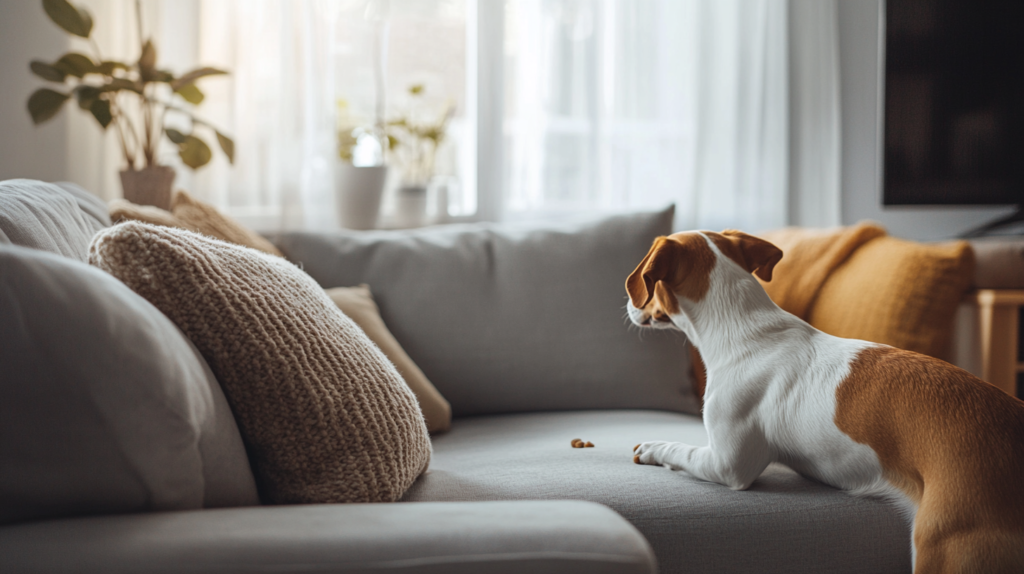
One of the most mentally stimulating interactive pet games leverages an animal’s most powerful sense: smell. Scent-based activities tap into natural foraging and hunting instincts while providing excellent cognitive exercise.
The Science Behind Scent Games
Dogs have approximately 300 million olfactory receptors compared to our mere 6 million, making their sense of smell roughly 40 times greater than humans’. Cats, while having fewer receptors (around 200 million), have a specialized organ called the vomeronasal organ that detects pheromones and other chemical signals.
Dr. Alexandra Horowitz, author of “Inside of a Dog: What Dogs See, Smell, and Know,” explains: “When dogs engage in scent work, they’re using the most sophisticated part of their brain. It’s like giving them a complex crossword puzzle that’s perfectly matched to their abilities.”
Hide and Seek for Dogs
Treat Searches: Begin by hiding treats in easy-to-find locations while your dog watches, then gradually increase difficulty by hiding them out of sight.
Toy Hunts: Have your dog “stay” while you hide their favorite toy, then release them to find it using verbal cues like “search” or “find it.”
Advanced Nose Work: Consider joining organized canine nose work classes that teach dogs to identify and locate specific target odors, similar to professional detection dog training.
Foraging Activities for Cats
Food Puzzles: Scatter dry food or treats around your home for your cat to find, encouraging natural hunting behaviors.
Scent Trails: Create trails by dragging a strongly scented treat (like freeze-dried chicken) along the floor, leading to a reward.
Herb Gardens: Many cats respond enthusiastically to catnip, silver vine, and cat thyme. Planting these herbs in accessible pots creates an engaging sensory experience.
Treasure Hunts for Small Pets
Hamster Mazes: Create simple cardboard mazes with hidden treats at various points, allowing small pets to follow their nose to rewards.
Rabbit Dig Boxes: Fill shallow boxes with pet-safe paper or fabric strips with hidden vegetables or herbs throughout, encouraging natural digging behaviors.
DIY Scent Work Equipment
- Snuffle Mats: These homemade or purchased fabric mats with multiple flaps and pockets conceal treats that pets must sniff out.
- Muffin Tin Games: Place treats in a few cups of a muffin tin and cover all cups with tennis balls. Your pet must identify which cups contain treats.
- Paper Towel Roll Puzzles: Fold treats into a paper towel roll and fold the ends to create a simple puzzle.
Research published in Applied Animal Behaviour Science found that dogs who regularly engage in scent work show significantly lower stress hormones and increased problem-solving abilities compared to control groups.
5. Water Games: Splash-tastic Fun for Water-Loving Pets
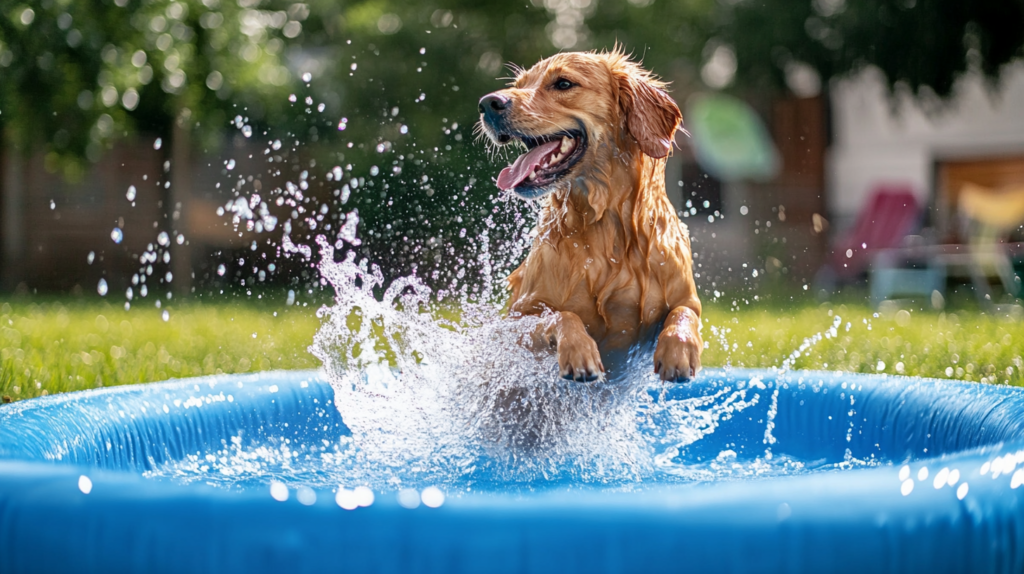
Many pets, particularly certain dog breeds, have a natural affinity for water that can be channeled into entertaining and refreshing interactive pet games. Water play provides excellent exercise while keeping pets cool during warmer months.
Pool Games for Dogs
Diving for Toys: Using specially designed sinking toys that are bright and easily visible underwater encourages dogs to dive and retrieve.
Pool Obstacle Courses: Floating hoops, platforms, and tunnels create engaging water-based agility courses for confident swimmers.
Water Fetch: Throwing floating toys across the pool combines traditional fetch with swimming exercise, providing excellent low-impact cardiovascular benefits.
| Breed | Water Affinity | Recommended Water Games |
| Labrador Retriever | Very High | Diving, distance retrieving |
| Portuguese Water Dog | Very High | Underwater retrieving, towing games |
| Newfoundland | High | Rescue games, towing toys |
| Golden Retriever | High | Water fetch, pool agility |
| Standard Poodle | Moderate to High | Surface retrieving, shallow water play |
Sprinkler Games for Multiple Pet Types
Sprinkler Chase: Many dogs and some cats enjoy chasing water streams from oscillating sprinklers.
Kiddie Pool Enrichment: Floating toys in shallow kiddie pools provide entertainment for dogs who may not be confident swimmers.
Splash Pads: Pet-specific splash pads with water jets provide safe water fun without depth concerns.
Safety Considerations for Water Games
Dr. Michael Davis, DVM and canine sports medicine specialist, emphasizes: “Not all dogs are natural swimmers. Always introduce water gradually and never force a hesitant pet into water activities. Use properly fitted life jackets for inexperienced swimmers or breeds with less natural buoyancy.”
Additional safety tips include:
- Provide clean, fresh water to prevent consumption of pool chemicals
- Monitor for signs of fatigue or cold
- Create easy exit points from swimming areas
- Never leave pets unsupervised around water
- Rinse chlorine or salt water from fur after swimming
Unexpected Water Enthusiasts
While we typically associate water play with dogs, other pets sometimes enjoy modified water activities:
Cats: Some cat breeds, including Maine Coons, Turkish Vans, and Bengal cats, often show interest in water play with shallow containers or dripping faucets.
Ferrets: Many ferrets enjoy shallow water play with appropriate supervision.
According to a study in the Journal of Veterinary Medicine, regular swimming can reduce joint pain in older dogs by up to 40% compared to land-based exercise alone, making water games particularly valuable for aging pets.
6. Agility and Obstacle Courses: Challenge Mind and Body
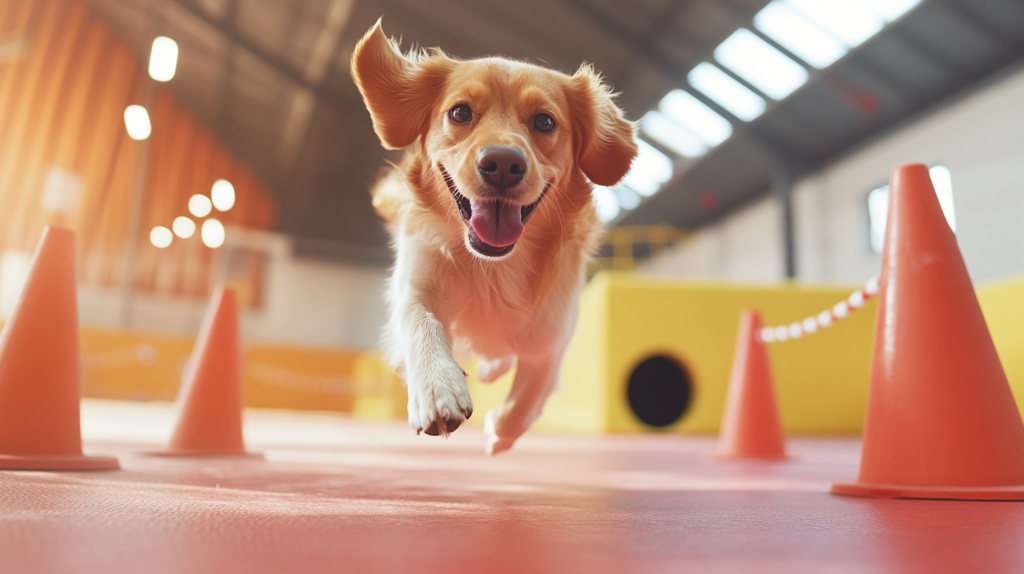
Creating custom agility courses transforms your yard or living room into an exciting playground that challenges your pet physically and mentally. These interactive pet games improve coordination, confidence, and obedience while strengthening the bond between you and your pet.
DIY Backyard Agility for Dogs
Jumping Obstacles: PVC pipes and pool noodles create adjustable jumps suitable for dogs of all sizes.
Weave Poles: Evenly spaced garden stakes or upright PVC pipes form weaving patterns for dogs to navigate.
Tunnel Fun: Collapsible play tunnels designed for children make excellent agility tunnels for pets.
A-Frames and See-Saws: For the ambitious DIYer, plywood constructions provide advanced obstacles (ensure all surfaces are smooth and stable).
Indoor Obstacle Courses
Even apartment dwellers can create engaging obstacle courses:
Furniture Navigation: Arrange cushions, ottomans, and chairs to create pathways for pets to navigate.
Blanket Tunnels: Drape blankets over chairs to create tunnels and hiding spots.
Hoop Jumps: Hula hoops held in position create simple indoor jumps.
Balance Challenges: Couch cushions or specialized balance equipment helps pets develop core strength and body awareness.
Agility for Cats
Feline agility has grown significantly in popularity, with cat-specific considerations:
Vertical Elements: Cats naturally enjoy climbing, so incorporate shelves, cat trees, and platforms at various heights.
Narrow Walkways: Balance beams made from shelving encourage natural feline balance abilities.
Jump Combinations: Strategically placed platforms encourage cats to make calculated jumps of increasing difficulty.
The International Cat Agility Tournaments (ICAT) reports that cats who regularly engage in agility activities show improved confidence around new people and reduced startle responses to environmental changes.
Small Pet Obstacle Courses
Rabbits, guinea pigs, and even ferrets can enjoy scaled-down obstacle courses:
Cardboard Tunnels: Connected cardboard tubes create engaging tunnel systems.
Mini Jumps: Small hoops or low barriers encourage jumping behaviors.
Hide and Seek Elements: Incorporate hiding spots and peek-a-boo features throughout the course.
Training Tips for Successful Agility Play
Dr. Leslie Woodcock, certified dog trainer and agility competitor, advises: “Start with just one or two easy obstacles and use high-value rewards. Only add complexity after your pet successfully masters the basics. Keep sessions short (5-15 minutes) and always end on a positive note.”
Additional training recommendations:
- Use consistent verbal cues for each obstacle
- Practice regularly but avoid drilling any single element
- Always warm up pets before intense agility sessions
- Adjust difficulty based on your pet’s age, breed, and physical condition
7. Social Interactive Games: Multiplayer Fun
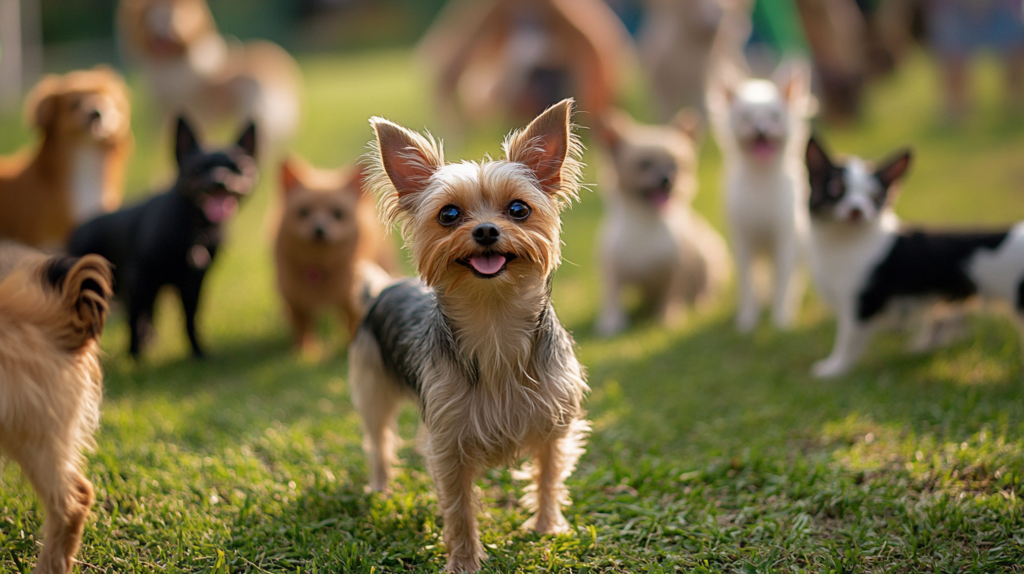
While many interactive pet games focus on human-pet interaction or solo play, social games involving multiple pets or people create valuable opportunities for socialization and communication skills development.
Multi-Dog Games
Structured Tug: With proper rules (such as “drop it” commands), supervised tug games between compatible dogs can be healthy and enriching.
Flirt Pole Play: A long pole with an attached toy allows multiple dogs to chase and take turns capturing the “prey” while maintaining safety distance between participants.
Structured Chase: Organized chase games with clear boundaries prevent overexcitement while allowing healthy play.
Dr. Patricia McConnell, animal behaviorist and author, notes: “Well-supervised multi-dog play teaches valuable skills like impulse control, reading body language, and appropriate play intensity.”
Pet-Family Games
Hide and Seek: Have family members hide while another person holds the pet, then release them to find everyone. This game builds confidence and reinforces recall skills.
Hot and Cold: Have one person hide a treat or toy while another guides the pet using only “hot” and “cold” vocal cues, encouraging the pet to follow directional guidance.
Simon Says for Dogs: Create a modified version where different family members give commands the dog knows, helping pets learn to generalize commands across different people.
Interactive Toys for Multiple Pets
Treat Balls: Rolling treat-dispensing toys encourage cooperative play as pets push the toys toward each other.
Parallel Play Stations: Set up multiple puzzle feeders at appropriate distances to encourage peaceful co-feeding.
Bubble Machines: Pet-safe bubbles create engaging entertainment for multiple pets simultaneously.
Benefits of Social Games
Research published in the Journal of Applied Animal Welfare Science indicates that pets who regularly engage in structured social play show:
- 48% better response to unfamiliar animals
- 35% improved ability to read social cues
- Significantly reduced resource guarding behaviors
- Enhanced overall adaptability to new situations
Veterinary behaviorist Dr. Sophia Yin emphasized that “properly supervised social games create positive associations with other animals and people, potentially preventing behavior problems before they develop.”
FAQ About Interactive Pet Games
How long should I play interactive games with my pet each day?
Most experts recommend a minimum of 15-30 minutes of dedicated interactive playtime daily, ideally split into 2-3 sessions. However, this varies based on your pet’s age, breed, energy level, and health condition. Working breeds like Border Collies may need 1-2 hours of mental and physical stimulation, while older or less energetic pets might be satisfied with shorter sessions. Monitor your pet’s engagement level and adjust accordingly.
Can interactive games help with behavior problems?
Yes! Interactive pet games provide excellent outlets for natural behaviors that might otherwise become problematic. For example, puzzle feeders can redirect destructive chewing, while scent games can help reduce excessive barking by providing mental stimulation. A study from the University of Bristol found that dogs given daily puzzle toys showed 30% fewer anxiety-related behaviors like inappropriate elimination and destructive chewing.
What are signs my pet is getting bored with their current games?
Watch for decreased interest, walking away from toys, or ignoring games they previously enjoyed. You might also notice yawning (a stress signal in dogs) or increased restless behavior. This suggests it’s time to rotate toys or introduce new games. Dr. Emily Blackwell, animal behaviorist, recommends keeping toys in three separate bins and rotating them weekly to maintain novelty.
Are there interactive games suitable for senior pets?
Absolutely! Senior pets benefit tremendously from mental stimulation. Consider lower-impact options like puzzle feeders, scent games, and modified water activities. These provide cognitive benefits without straining aging joints. Research shows that continued mental enrichment may help slow cognitive decline in aging pets, similar to the “use it or lose it” principle in humans.
How do I know which interactive games are best for my specific pet?
Start by observing your pet’s natural tendencies. Does your dog like to dig, retrieve, or sniff? Does your cat prefer pouncing, climbing, or batting objects? Select games that match these innate preferences. For example, terriers who naturally dig might enjoy snuffle mats, while retrievers often excel at water games. Most importantly, pay attention to what generates enthusiasm and engagement in your unique pet.
Can I leave my pet alone with interactive toys?
Some interactive pet games are designed for supervised play only, while others are safe for independent use. Always check manufacturer guidelines and observe your pet with a new toy before leaving them unattended. Remove any toys with small parts that could be swallowed, and inspect regularly for wear and tear. Rotating available toys creates continued interest during alone time.
Enhancing Your Pet’s Play Experience: Products We Recommend
For more expert pet care tips and product recommendations, visit BlithePet.com — your trusted source for pet wellness.
Conclusion: Transform Your Pet’s Life Through Play
Interactive pet games , park aren’t just about entertainment—they’re essential tools for providing your furry friend with a fulfilling, enriched life. By incorporating a variety of mental and physical challenges into your pet’s routine, you’re helping prevent behavioral issues, maintaining their cognitive health, and strengthening your bond.
The key to success is observation and adaptation. Pay attention to which games spark joy and engagement in your unique pet, and don’t be afraid to modify activities to match their preferences and abilities. Remember that even short play sessions, when conducted regularly, can have profound positive effects on your pet’s wellbeing.
As pet owners, we have the wonderful responsibility of ensuring our animals live their best lives. Interactive play is one of the most enjoyable ways to fulfill this obligation, creating shared experiences that benefit both pet and human alike.
Have a similar experience with your pet? Share it in the comments below!

